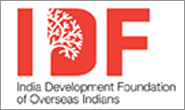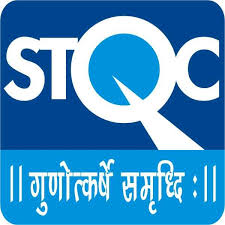Remarks at MP-IDSA – Sichuan University Virtual Dialogue
India-China Relations
23 September 2021
Your Excellency Dai Bingguo,
Amb. Vijay Nambiar,
Amb. Sujan Chinoy,
Professor Li Zhiqiang,
Professor Yao Leye,
My good friend Ambassador Sun Weidong,
Distinguished participants,
Ladies and Gentlemen,
Good afternoon,
I am grateful to the MP-IDSA and Sichuan University for inviting me to speak at today’s event. I am also very glad that IDSA and Sichuan University have once again gathered an extremely distinguished group of scholars and practitioners from India and China to share their views on bilateral relations. I am particularly glad to see on the Indian side a few of my former bosses, Ambassadors Nambiar and Ashok Kantha among them and several former colleagues. I hope that the next two days will witness frank and substantive conversations between the two sides and lead to a greater appreciation of each other’s concerns and views. I also hope that in the not too distant future, we will be able to have a meeting such as this in a face to face format as that will lead to greater understanding.
2. I recall that a similar webinar on India-China relations had been arranged by IDSA and Sichuan University in November last year as well when we were dealing with significant changes in the region and the world. Surveying the global situation almost a year since then, we can agree that the difficult and testing phase that began in early 2020 has by no means ended. Global challenges, such as tackling the pandemic, reviving economies and adapting to climate change and sweeping technological transformations, are still with us. Concerns about terrorism in the region and the consequent threats to peace and security have once again emerged with the unravelling of the situation in Afghanistan and have seized the attention of several of its neighbours, including India and China. Finally, the effectiveness and representativeness of multilateral bodies in addressing some of these pressing issues remains an open question.
3. I would argue that all these issues and challenges have only served to amplify the importance of India-China bilateral relations. It is for this reason that our leaders have agreed on several occasions that India-China bilateral relations are significant not only for our two countries, but also for regional and global peace, prosperity and stability. In fact, when I go over the history of India-China diplomatic dialogue, this understanding appears as a perennial theme in that dialogue. Of course, for two countries that are neighbours and also large and emerging economies, it is not unusual to have differences and problems. The key question is how to deal with them and ensure that outcomes are informed by reasonableness, maturity and respect for the maintenance of peace and tranquillity along our frontiers.
4. This distinguished group is aware that the most pressing issue on our bilateral agenda for over a year now has been the situation in Eastern Ladakh that has prevailed since April 2020. The two sides have engaged intensively with each other through diplomatic and military channels. The Working Mechanism for Coordination and Consultation on India-China Border Affairs and the Senior Commanders’ Meetings have been working in tandem. Their work has, of course, been guided by meetings at the political level. External Affairs Minister Dr. S. Jaishankar and his counterpart, State Councillor and Foreign Minister Wang Yi, have met in person in Moscow last year as well as on two separate occasions in Dushanbe in July and September this year. They have also engaged in phone conversations centering on the border situation as well as other issues of bilateral interest.
5. These contacts have resulted in significant progress on the ground. Following disengagement in the Galwan Valley in July last year, the two sides have been able to disengage from the North and South Banks of the Pangong Lake in February 2021, and most recently from Gogra in August 2021. The conversation between the two sides continues regarding the remaining locations and we hope that disengagement at the remaining friction areas will enable us to reach a point where we can pick up the threads of bilateral cooperation.
6. The experience of this multi-faceted dialogue over the last year and a half leads me to believe that we are well-equipped when it comes to resolving pressing issues in the bilateral relationship. Our leaders have in the past concurred that we must work out issues peacefully, prevent differences from turning into disputes and, most importantly, preserve peace and tranquillity in our border areas. Our recent experience also suggests that at the ground level, when managing a difficult bilateral situation, finding a resolution hinges on mature minds, open channels, and a consistency between words and actions. But while these are positive elements we can draw on, we must steer clear of certain obstacles which could block progress. And here I will specify three in particular.
7. The first is to avoid shifting goalposts. For long, the Indian and Chinese sides have adhered to a well-understood distinction between resolving the Boundary Question and managing border affairs. The 1988 understanding between our leaders was precisely for keeping the resolution of the Boundary Question on a track separate yet parallel to the bilateral relationship, with maintenance of peace and tranquillity as the prerequisite. The Special Representatives mechanism, the Agreement on Political Parameters and Guiding Principles of 2005 and the three-phase framework were all designed in order to work on the Boundary Question, which we agreed was a complex and sensitive issue requiring time to work through.
8. On the other hand, for managing border affairs on a daily basis, we evolved a mechanism, consisting of instruments such as the WMCC and a succession of agreements, protocols and CBMs, in order to govern behaviour on the ground and ensure peace and tranquillity. A serious violation of peace and tranquillity in the border areas naturally requires us to apply our minds on the basis of established agreements, protocols and mechanisms to resolve it. As we do so, any attempt to confuse border affairs with the Boundary Question is a disservice to the work of those involved in finding solutions. This is why the Indian side has been consistently saying that the current issue is about restoring peace and tranquillity to the border areas and is not about the resolution of the larger Boundary Question, on which our stance has not changed, despite what happened last year.
9. The second obstacle is to take a one-sided view of concerns and sensitivities, where one’s own preoccupations trump any of those flagged by the other side. As EAM Dr. S. Jaishankar has stated, India-China relations must proceed on the basis of the “three mutuals” – mutual respect, mutual sensitivity and mutual interests. In an international community where we interact as equals, and as important major neighbors of each other, it cannot be that only one side’s concerns are of relevance while the other side’s case goes unheard. Safeguarding territorial integrity and national security holds equal value for both sides. Affixing blame exclusively on the other side is not a helpful approach. And to press one’s own concerns and disregard the other side’s concerns and sensitivities without any explanation or recourse goes beyond disrespect. It actually creates even more obstacles to finding solutions.
10. I would also like to mention that these issues need not be limited to the realm of high politics. Far less complex issues, which have a purely humanitarian context and are not connected to bilateral diplomatic stances, such as facilitating the movement of students, businesspersons and stranded family members from India to China for over a year and a half now, await a more balanced and sensitive approach. I might add here that India has also attempted to keep our trade and commercial relationship insulated from current differences, for instance by continuing to issue visas to Chinese businesspersons to visit India. However, we are disappointed to see an unscientific approach with regard to several problems currently being faced by Indian students, businessmen, marine crew and exporters, to name a few.
11. The third obstacle is viewing bilateral relations through the prism of relations with other countries. We are two ancient civilizations and two modern Asian nations who have evolved their own independent foreign policies and cherish their own strategic autonomy. For India’s part, I would say that a policy approach that came into its own over six decades ago, continues to be relevant today. India formulates its national and foreign policies on the basis of national interest first and foremost. We believe in multilateralism but we are also convinced that it needs to be reformed in order to better deliver its fruits to all stakeholders. We are engaged in key global dialogues while simultaneously pursuing our objectives in several smaller forums whose members have shared interests. Many of these forums include China – the SCO, BRICS and RIC are some examples of this and these dialogues have continued even during the difficult phase that our bilateral relationship is passing through. India-China relations therefore must be judged and managed on their own merits. They are substantial enough and sufficiently complex that they require their own approach and appropriate handling, without imaginary third factors complicating them further and distracting us from working on our priorities.
Dear friends,
12. I hope that our future engagement will be guided by the intent and spirit of our leaders’ vision for our bilateral relations. We must focus on the actual issues that face us, and employ a sensitive and constructive problem-solving approach, while bearing in mind each other’s essential autonomy of decision-making. Addressing and processing differences properly means confronting them head on and not sweeping them under the carpet. This approach will enable us to do what is necessary to bring relations to a healthier track. I remain convinced that we can resolve our current difficulties without the outcome necessarily appearing to be a win or loss for either side. A win-win solution for both India and China is very much possible and we remain committed to pursuing it.
13. I am sure that this year’s Dialogue will offer an opportunity for candid conversations, yielding fresh insights and greater mutual understanding on the several issues that confront us. I notice that the very first session later this afternoon is titled “Rebuilding Trust”. That is indeed appropriate, since trust was damaged with the events of last year. It is often said that trust goes away on horseback and comes back on foot. I do believe, nevertheless, that there is the patience and wisdom in this group to help us reach our shared objectives. I wish you all a successful set of interactions over the next two days.
Thank you.





























